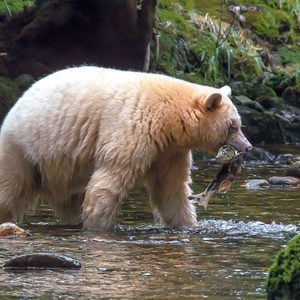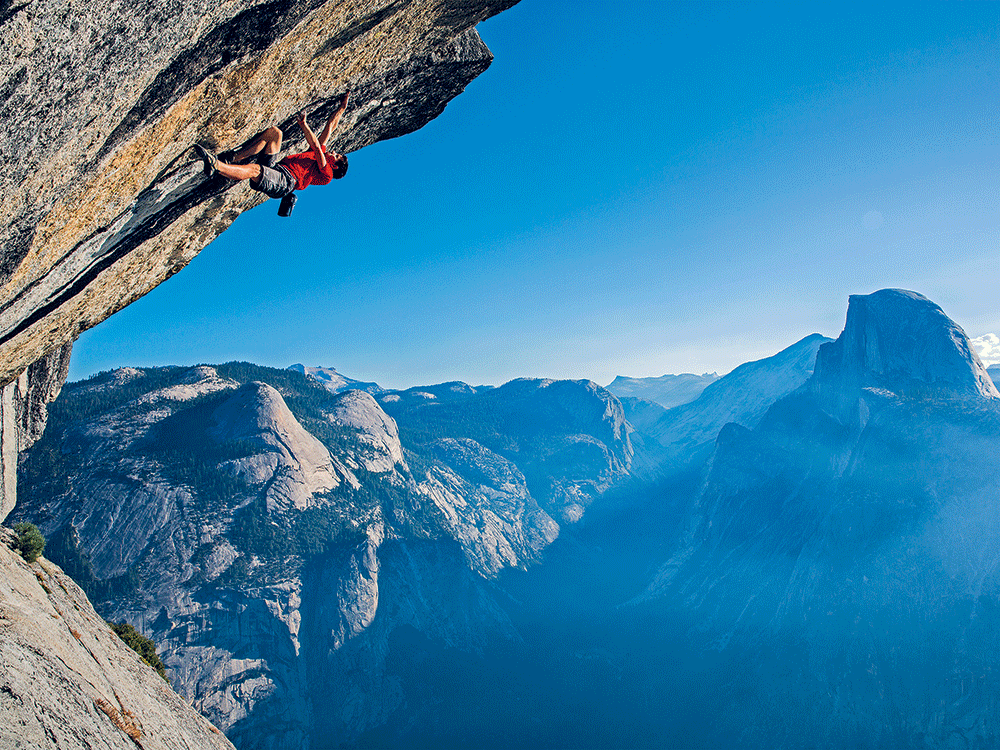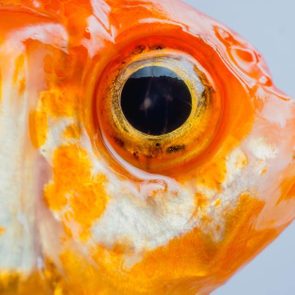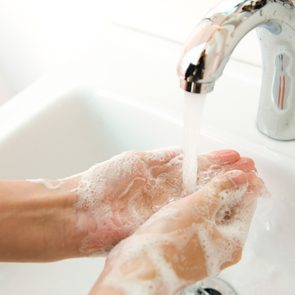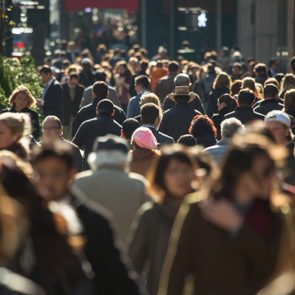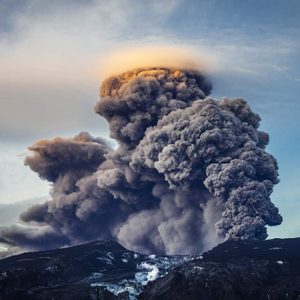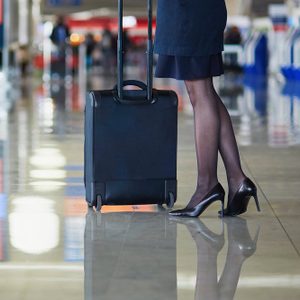As a passionate hobby photographer for about eight years now, I love snapping pics of everything from badgers to bears. Red fox kits had also always been on my wish list of critters to photograph.
Living in rural Alberta, I recently received some tips from local residents as to where these elusive little guys were living.
Every evening my husband Troy and I would take a drive to see if anybody was home in their den. There was one time we saw the mama fox take a rodent into the den, and we spotted a few gnawed bones scattered about, but the kits didn’t appear.
After several evenings of touring, waiting and watching, we finally spotted five playful kits. The one thing I have learned as an amateur photographer is that photographing wildlife takes great patience, and mostly the luck of being in the right place at the right time. This sweet family lived on the side of a hill, west of our town of Caroline, where we could respectfully watch them from afar in our vehicle.
Using a 500-mm telephoto lens propped up on a beanbag on the car window for steadiness, I watched them in awe. Their cute little fuzzy faces were hard not to love. Watching them tear around, race up and down the hill, scamper in and out of the den, roll in the sand, and pin each other down, it was quickly apparent that there was already a hierarchy being established as to which was the dominant kit.
I feel very blessed to have finally captured this “bucket list” photo and to have spent some time watching this adorable, energetic bunch.
Next, check out a gorgeous gallery of the wildlife of the Laurentians, photographed from a kayak.
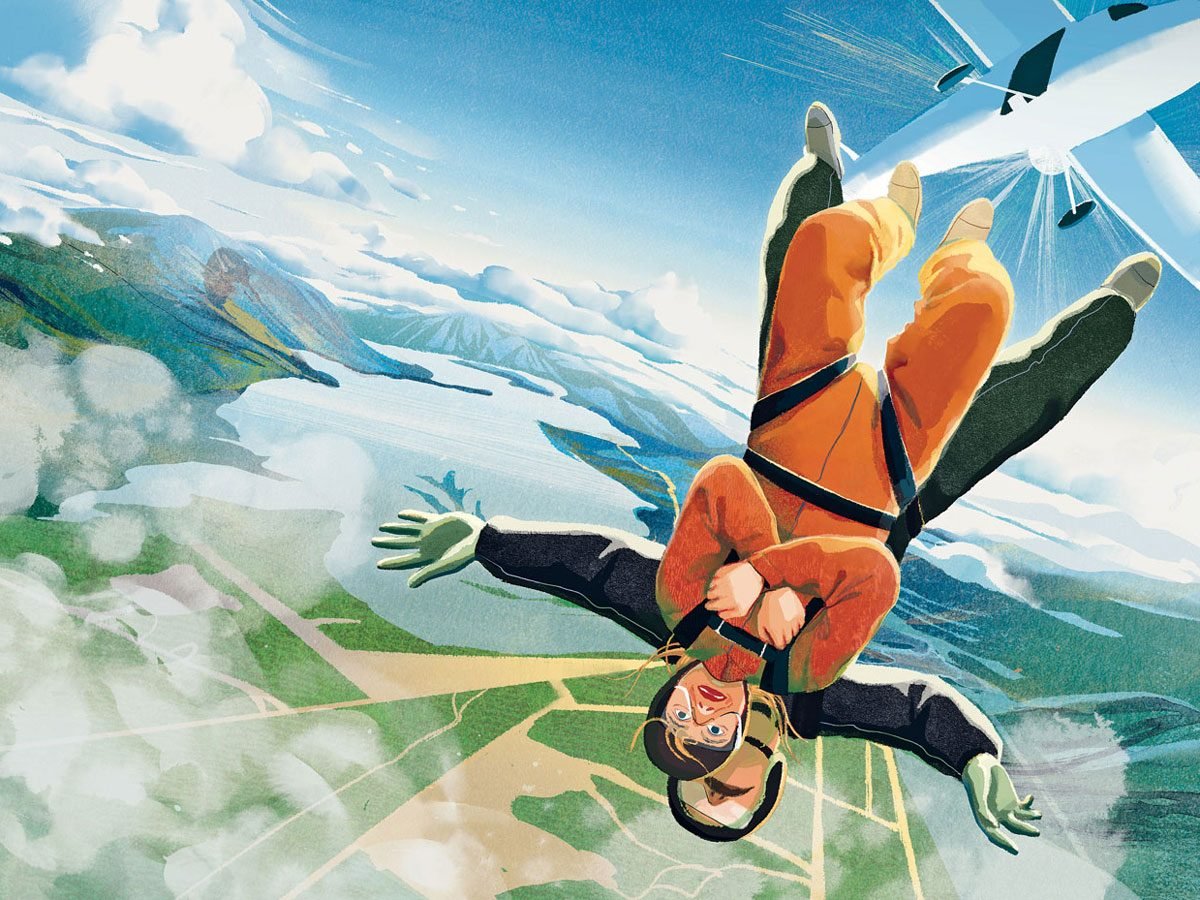
In the last moments before I climbed into the Cessna, I turned and faced a young, bearded man who was pointing a video camera at my face. I wore a jumpsuit made of panels of fluorescent orange and green fabric, the colours faded by years of sun and wind. A pair of goggles and a leather helmet were strapped on my head. “Why are you here?” the man asked.
I took a deep breath. “My name’s Eva,” I said, speaking to the camera lens, “and I’m here to face my fear of falling from heights.”
I crawled into the tiny plane, awkward in my elaborate harness. Only the pilot had a seat—all the others had been removed—and I sat on the floor behind him, facing backwards, spooning with my divemaster, Barry. Another pair climbed in beside us: divemaster Neil and his charge, Matthew, a first-time skydiver like me.
They sat by the open doorway, and Matthew and I bumped fists as the little Cessna rattled its way down the gravel runway. Matthew looked elated. I knew I was supposed to be excited, too, but I couldn’t get there. For the moment, I existed in a bubble of cold calm. That, I figured, was preferable to the likely alternative: wild, hair-tearing panic.
I’d tried to work on my fear of heights over the years, but the matter never seemed urgent. Then, in February 2016, during a weekend of ice climbing with friends in British Columbia, I panicked—an irrational force took over my body and I refused to move any further. My fear put my own life, and the safety of others, in danger. I didn’t want my terror to control me that way ever again.
I’d arrived at the small airstrip in the village of Carcross, Yukon, several hours earlier. Carcross is an hour’s scenic drive south of my home in Whitehorse. Among its few claims to fame is the Carcross Desert, billed as the world’s smallest, a tiny collection of soft, rolling dunes surrounded by snow-etched mountains and boreal forest. Every summer, a skydiving outfit based in British Columbia caravans up here for a couple of weeks and offers Yukoners the chance to jump out of a plane, plummet through free fall, deploy a parachute and eventually land in the forgiving embrace of the tiny patch of sand.
The pro skydivers live by the airstrip, just outside the village, for the duration. The vibe of their encampment is somewhere between summer weekend camp-out and itinerant circus troupe. They gather in a jumble of tents, U-Hauls, cars, RVs and trucks loaded with campers. Barry is their patriarch. When I met him, he’d been jumping for 39 years, including more than 2,000 tandem jumps with clients. He had grey hair and a grey moustache, a big belly and a bigger voice. He’s not what you picture when you think “professional thrill-seeker,” but his age and experience made me more comfortable than any young gun could have. As the saying goes, there are old pilots and there are bold pilots, but there are no old, bold pilots.
I was here because my three most potent physical fears were of heights, speed and falling. And there was nothing, I figured, that combined all three as effectively—or as horrifically—as skydiving. My notion was to take a blitzkrieg approach to facing my fears. I would force myself to do the scariest thing I could think of, in a full sensory assault on my fear response, and if I came out the other side, I would be changed, right? Empowered. That was the idea. So far, I just felt sick and scared.
Barry introduced us first-time jumpers to the gear we’d be using, how the various safety mechanisms worked, and informed me that if I tried to grab on to the plane as we jumped, latching on in a last-minute panic, he would break my fingers to release my grip if he had to. His tone suggested that it wouldn’t be his first time doing so.
I signed the bluntest waiver form I’d ever seen. “Sport parachuting is not perfectly safe,” it read. “We cannot and do not offer any guarantees. We do not guarantee that either or both of your parachutes will open properly. We do not guarantee that individuals at SkydiveBC North or Guardian Aerospace Holdings Inc. will function without error. We do not guarantee that any of our backup devices will function properly, and we certainly do not guarantee that you won’t get hurt. You may get hurt or killed, even if you do everything correctly.”
The form did nothing to calm me down. I signed my name and handed it over. With the paperwork completed, there was nothing much left to do but wait my turn—and stew.
When the Cessna was ready for us, Barry showed me how we would enter and exit. The plane was tiny, and when we launched ourselves through its low doorway, we would be harnessed together. There was a careful protocol to follow. I’d pictured us stepping out of a full-height doorway, or even a yawning garage-style opening, like in the movies. But the small plane, plus our joined bodies, demanded an awkward crouch-and-roll. For some reason, the sheer impossibility of the manoeuvre—really, I was going to tandem-somersault out of a tiny opening in midflight?—calmed me down. This couldn’t be real. It seemed like a joke.
Then, suddenly, it was time. I pulled on my fluorescent jumpsuit, helmet and goggles and got cinched into my harness. I faced the camera, declared my intentions and climbed into the plane.
We were airborne, rising up above the desert, with Carcross and Bennett Lake stretching away into the mountains. The landscape below me was familiar, comforting. Countless times, I had hiked it, biked it, paddled it, driven it, flown over it in commercial jets. I’ve never minded flying; it was the falling I was worried about. I tried to breathe deeply and focus on the scenery. There was the train bridge. There was the beach. There was the highway leading home.
Somewhere on the way up, shivering with cold and fear, I noticed something: I wasn’t sweating. I had expected to be clammy with fear-sweat, but instead I was bone dry. Perspiration was on my mind because I’d recently heard about a scientific study that used the sweat of first-time skydivers to answer a single question: can humans smell fear?
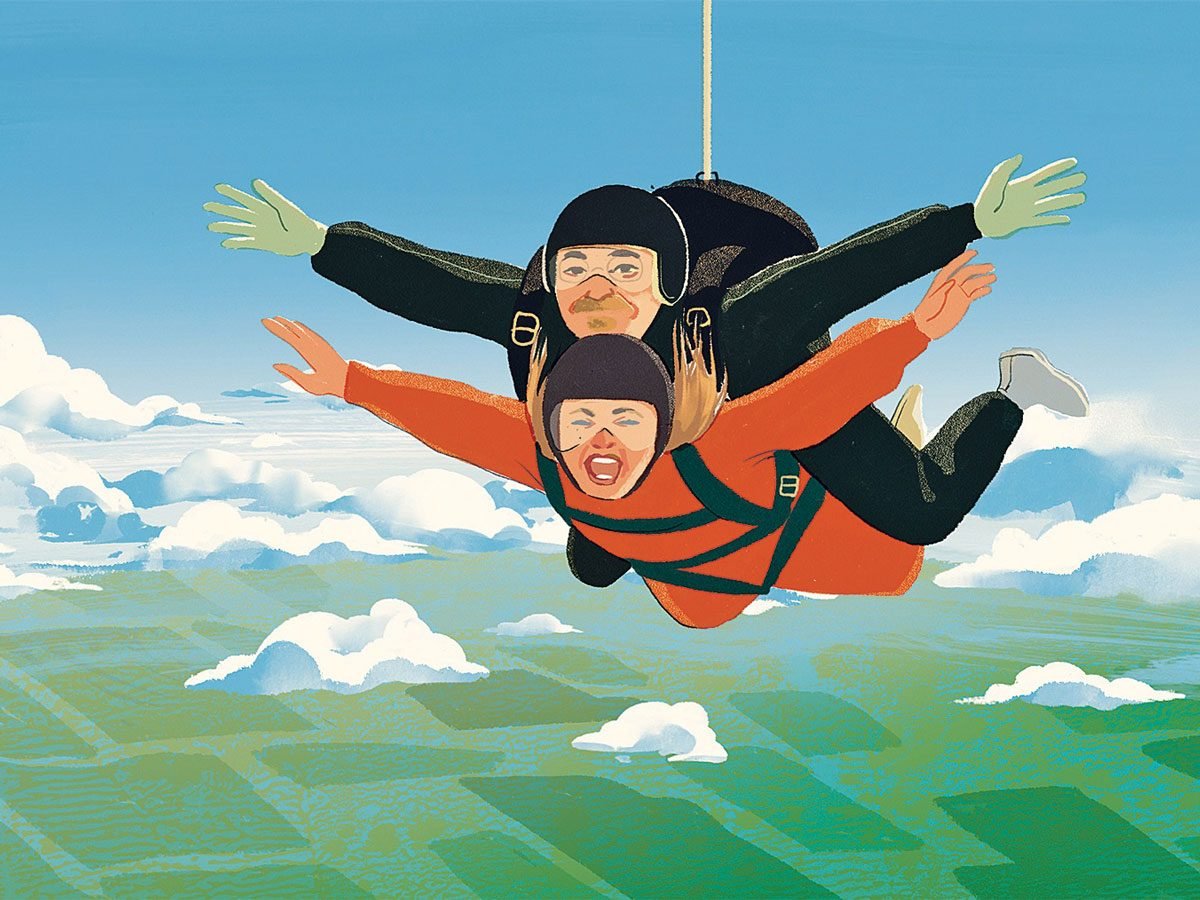
We’ve long known that animals can “smell” fear on each other, although in casual, non-scientific conversation, we tend to talk about it in terms of predators smelling fear on their prey. That’s a misunderstanding of the phenomenon. What happens is that prey animals unknowingly emit what are known as alarm pheromones, airborne chemical cues intended to silently warn other members of their species, alerting them to nearby predators and other potential dangers.
Several studies have pointed to the possibility that humans, too, can signal their fears to one another by chemical means, through our sweat. Two of those studies showed that test subjects were able to distinguish between the sweat of a person who was watching a scary movie and a person who was watching something non-frightening. Another found that subjects who had smelled the sweat of scary-movie-watchers demonstrated heightened cognition in the presence of a potential threat. Still more studies found an increased startle response in people who’d been exposed to someone else’s fear-sweat, as well as a higher likelihood of perceiving facial expressions as fearful or negative. The takeaway was clear: people who had smelled another human’s fear-sweat were primed for a fear response of their own.
But those studies were all based on observed behaviours. A team of researchers led by Lilianne Mujica-Parodi, of Stony Brook University in New York State, wanted to look deeper. They decided to use an fMRI scanner (which tracks blood flow to measure brain activity in real time) to determine whether exposure to human fear-sweat provoked a measurable reaction in another human’s amygdala, the key brain structure that triggers our fear response.
They started by collecting sweat from 144 people who were participating in a first-time tandem skydive. Then they used those same 144 individuals as their own controls, collecting their sweat after they’d run on a treadmill for the same length of time that the skydive had lasted and at the same time of day.
“Because the tandem master controlled the descent,” the researchers wrote later, “the skydiving condition produced a predominantly emotional but not physical stressor for our sweat donors, while the exercise condition produced a predominantly physical but not emotional stressor.” (They confirmed the first-timers’ emotional stress by testing their levels of cortisol, a hormone released by our adrenal glands in connection with our fight-or-flight response. Sure enough, they had spiked.)
Then came phase two: presenting the sweat samples to test subjects and using fMRI scans to view how their brains reacted in real time. They showed that when a subject inhaled sweat taken from a stressed or fearful person, their amygdala was activated. In a secondary procedure, they had also shown that what was happening wasn’t about smell, exactly. Our noses can’t distinguish between fear-sweat and regular, everyday exercise-sweat, but our brains react differently to the two. That’s what’s known as a chemosensory reaction: the pheromones in the fear-sweat trigger our emotional, not our olfactory, sensors.
Then they took it one step further. The researchers hooked another group of test subjects up to an electroencephalogram (EEG) machine. Basically, an EEG lets researchers see which parts of the brain are reacting to a given stimulus. Once they were wired and ready, the subjects were exposed to both fear-sweat and exercise-sweat while being shown a range of images of human faces, with a carefully manipulated spectrum of expressions ranging from neutral to angry.
The results were striking. When they were inhaling the exercise-sweat, the subjects’ brains only reacted strongly to the angry faces, treating them, but not the neutral faces, as potential threats. But when they inhaled the fear-sweat, subjects reacted strongly to the whole range of faces, from those with neutral expressions to ambiguously angry to clearly angry. The suggestion, the researchers wrote, was that the fear-sweat triggered the brain to create a sort of heightened vigilance in the subjects, a greater attention to the environment around them.
We can, indeed, “smell” fear on each other. And that chemical alert system prepares our brains to react to incoming threats.
When we spoke, I asked Mujica-Parodi why she had chosen skydiving as a way to gather the fear-sweat she needed. “Skydiving was a way to induce actual danger in a way that was also ethically sound and scientifically sound,” she told me. “The nice thing about skydiving is that it’s an experience unlike anything you’ve ever encountered before. Evolutionarily, there’s no animal that enjoys the feeling of being dropped, and it’s also highly controlled.”
I asked Mujica-Parodi if she’d ever gone skydiving herself. “I did force myself to jump, and I felt very nauseous,” she said. “I would not say that I enjoyed it.”
The ascent to 3,050 metres seemed to take hours, and as we climbed, the weird out-of-body calm I’d felt on takeoff seeped away.
It was like coming out of shock, losing that numbed protection and feeling the full pain of an injury for the first time—only instead of pain, I felt a terror that rose through my body until it reached my lungs, my throat and my brain and threatened to choke me.
Barry, behind me, sensed my growing tension—no surprise, since we were pressed together like a pair of lugers on a sled. He periodically squeezed my shoulder and pointed out landmarks below. As we neared jump height, the Cessna circled around a large cloud, skirting its edge.
“You might be a lucky girl and get a cloud jump,” Barry said.
I did not want a cloud jump.
The pilot announced that we were nearly in position for Neil and Matthew’s jump. They shimmied toward the gaping hole where the plane’s door should have been and nudged themselves awkwardly into a spooning crouch on the lip of the doorway.
Seeing them inch toward open space was nauseating, and I looked away. I couldn’t watch them vanish into the sky; I stared at the plane’s riveted metal wall instead. The pilot dipped the plane slightly to the right, tipping Neil and Matthew out the door, and then, liberated of their combined 270 pounds, the Cessna sprang back suddenly to the left. My stomach clenched and jerked and I swallowed hard.
Now it was our turn. Barry directed me to roll over and scuttle into position as the pilot got us lined up for another jump. My breath came fast; I struggled for control. I desperately wanted to shout, “No, no, I changed my mind. I don’t want to do this!”
I clenched my jaw. I knew that if I said the word, they would take me back down to the ground, keep my money and let me walk away. The whole day would be for nothing.
Eventually I got myself in place, hunched over with my kneecaps level in front of the doorframe, with Barry behind me. I tried to unfocus my eyes so I couldn’t see the opening and the endless air next to me, the ground far below. Over the roar of the wind and the plane, Barry shouted last-minute adjustments to the pilot, getting us lined up just right. “Give me five left! Five right!” The seconds stretched out while I fought the urge to quit. I had the sensation of trying to hold up some massive weight, my strength ebbing away, moment by moment.
Finally, Barry put his right foot out on the narrow metal step fixed to the plane’s fuselage, below the open door frame, and yelled for me to do the same. It took me three tries—the wind first blew my foot behind, then in front, before I finally lodged it against his. Next I had to scooch around so my left knee pointed out over the lip of the doorway and lock both my hands onto my harness, gripping a pair of handles at shoulder height. I was glad to have something to hold on to. Ever since Barry had promised to snap my finger bones if need be, I’d had a recurring vision of myself reaching out in panic as we exited the plane and fastening on to the door frame or a strut with a vise grip fuelled by fear, pulling the Cessna off balance and risking everyone’s lives.
We were halfway out of the plane, perched on the very edge of jumping. I was past the bail-out point now. I closed my eyes and tried not to hyperventilate, tried not to think about what was coming.
All I could do was stay limp and trust Barry to get us in the air—actually participating in our exit from the plane was beyond me. I felt him rocking back and forth to get our momentum up, heard him yell something, but I was deep in my own head. Then we rolled out of the plane and into space.
Barry had urged me to keep an eye on the Cessna as I somersaulted out of it. Watching the plane appear to fall away from you when you were the one plummeting was, he assured me, one of the coolest parts of a jump. But I had no desire to watch the earth and the sky spin around me. I kept my eyes shut hard until I could feel that Barry had stabilized us in free fall.
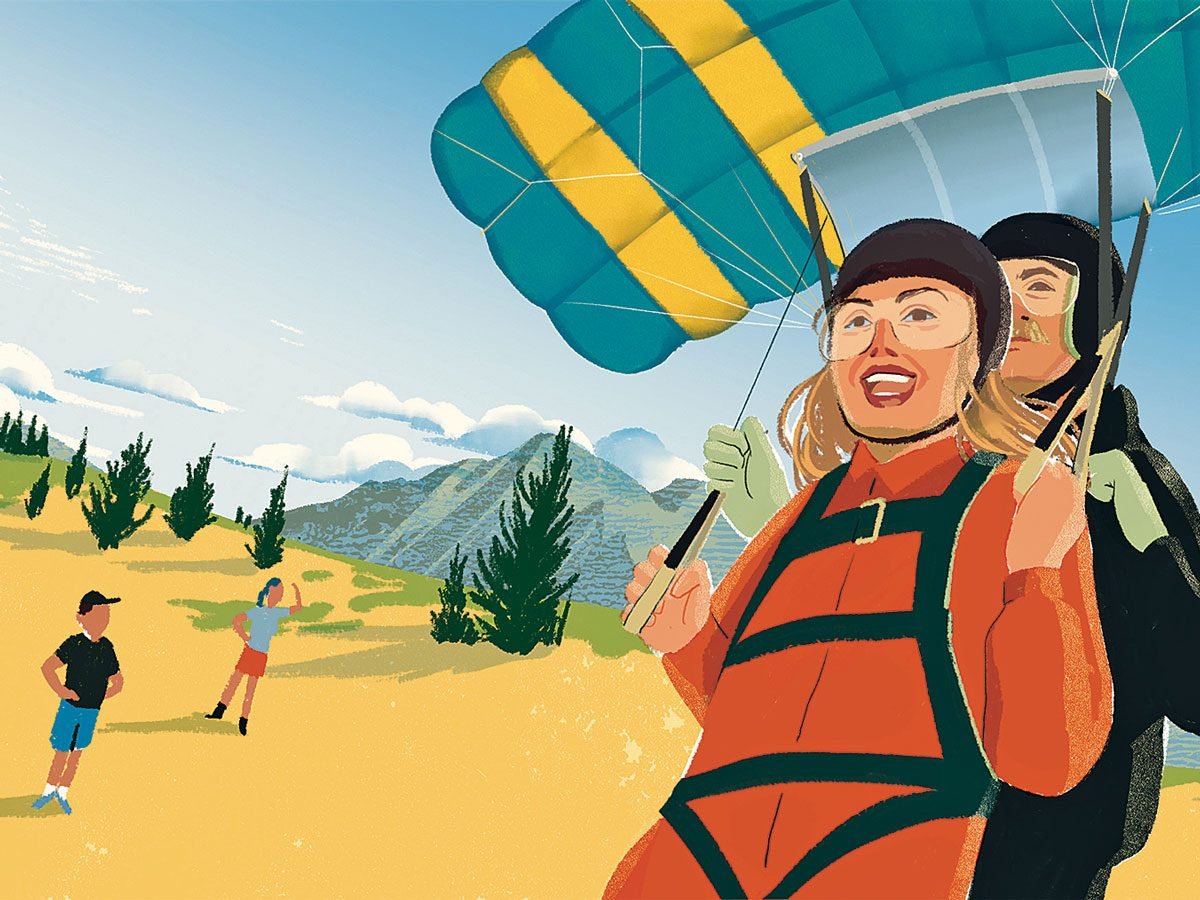
I felt him tap me on the shoulder, then again, and yell something in my ear, and I peeled my hands off the harness handles and thrust my arms out wide, like I was supposed to. I tried to think about arcing my body into a slight bow: feet together, head up, my belly pointing the way down. I stared at the ground rushing up at us, and suddenly I opened my mouth and spoke for the first time since we’d started the flight up.
“Holy shit!” I yelled, and the wind seemed to tear the words out of my mouth to make room for more. “Holy shit! Holy shit! Holy shit!” A small part of my brain noted, amazed, that I could even hear myself, could even produce audible speech, with the force of the air roaring by me. (Later, I would learn that we had reached a peak speed of 163 kilometres per hour.)
I screamed those same two words over and over through our entire 37 seconds of free fall. Once I got started, I couldn’t seem to stop. My voice got hoarse, my throat raw. I kept hollering. Dimly, over the sound of my own swearing, I heard Barry say something about our chute, then a force seemed to pluck at us from above—not a hard jerk, but now my feet were dangling below me and I could feel my weight pushing down on the crotch straps of my harness.
I stopped yelling. Barry reached forward and offered me the straps that controlled the parachute, to let me steer. It took me a couple of tries to put my shaking hands through the loops, and I was too weak to pull effectively. I could feel him pulling the cords for me from above.
Other jumpers had described the long, leisurely parachute descent after free fall as relaxing. But I couldn’t relax—I was too aware of my weight in the harness, my feet dangling, the familiar landmarks far below me. There was the train bridge. There was the beach. There was the highway leading home. Barry spun us around and I felt sick, hated him for a moment, and quavered that I didn’t like that. The fall went on and on. Finally we neared the desert and Barry took over steering entirely, reminding me of my role in landing.
He twisted us from side to side, tacking like a sailboat to shed speed as we came in over the dunes. Then he gave me the signal to pull my knees up (I did my shaky best) and pull down hard on the chute straps. I braced for impact, but my feet never touched—suddenly I was on my belly in the sand, Barry on top of me. He unclipped the right waist clip so he could roll off of me as the ground crew approached, cheering, and freed me completely.
The crew and other jumpers clustered around; someone helped me to my feet. I tried to smile, but my cheeks and lips felt as wobbly as my arms and legs. I stared at the sand and dug around inside myself, trying to find some pride in my accomplishment, some kind of silver lining with which to cover up the apparently bottomless chasm of fear I carried inside me.
Later, after I’d stripped off my harness, helmet and jumpsuit, after I’d calmed down enough to safely attempt the drive home, I did find some pride. I had done it, after all. I hadn’t backed down, pulled the plug at the last minute and forfeited my money and my dignity. I hadn’t clutched on to the airplane as we rolled out of it, killing us all. I hadn’t screamed the entire way down.
Excerpted from Nerve by Eva Holland. Copyright © 2020 Eva Holland. Published by Allen Lane Canada, a division of Penguin Random House Canada Limited. Reproduced by arrangement with the Publisher. All rights reserved.

When Prince William presented Kate Middleton with his beloved mother’s engagement ring in 2010, royal watchers everywhere swooned. After all, Princess Diana’s ring—a 12-karat blue Ceylon sapphire set in 18-carat white gold, surrounded by 14 diamonds—was arguably the most famous engagement ring in the world. Incredibly, however, the ring wasn’t appreciated by everybody.
A ring fit for a Queen
As the future king, Prince Charles’s choice of partner was bound to be highly anticipated and celebrated. When he met Diana, people rejoiced, sure that Charles had finally found his happily-ever-after. A relationship as special as theirs deserved a similarly unique ring—and that’s why palace officials were reportedly unhappy. Previous royal rings, including Queen Victoria’s and Queen Elizabeth’s, had been custom-made. (Queen Elizabeth’s ring was particularly romantic, with Philip’s mother, Princess Alice, gifting him her wedding tiara so it could be used to create Elizabeth’s ring.) However, Diana’s ring, gorgeous though it might have been was—gasp!—available off-the-rack to anybody. Take a look at these rare photos of Prince Charles and Princess Diana’s wedding day you might not have seen before.
Chosen from a catalog
Although the ring was certainly expensive—valued at £47,000 or approximately $60,000—the ring that Prince Charles offered to Princess Diana from fancy jewellers Garrard had been featured in the Garrard catalogue beforehand.
Founded in London in 1735, Garrard themselves had a royal pedigree, appointed as the official crown jeweller of the United Kingdom in 1843 by Queen Victoria, and serving every British monarch since. However, even though the ring itself had allegedly been royally-inspired by a sapphire-and-diamond cluster brooch given by Prince Albert to Queen Victoria as a wedding present, palace officials were reportedly unhappy. Their take? The ring simply wasn’t exclusive enough for a future Queen. (These frugal habits of the royal family might surprise you.)
Diana’s legacy
After Princess Diana’s tragic passing in 1997, her sons Prince William and Prince Harry selected heirlooms that they wished to keep, with Harry inheriting the famous ring. (Diana’s favourite Cartier Tank Francaise watch went to William.) However, when Prince William knew he was ready to propose to Kate Middleton, Harry didn’t hesitate to offer their mother’s ring. William and Harry swapped items, and William got down on one-knee in Kenya, after carrying the ring around in a knapsack for three weeks beforehand. William was quoted as saying of the iconic ring, “It’s very special, as Kate is very special. It’s my way of making sure my mother didn’t miss out on today and the excitement.” Here are more fascinating Prince William facts you probably didn’t know.
Published Mar. 6, 2020
The number of coronavirus cases around the globe is ticking up almost hourly and people are understandably concerned about catching it themselves. As of March 5, Johns Hopkins University‘s coronavirus tracker reports 95,000-plus confirmed cases with more than 3,000 deaths worldwide. (Find out the difference between an epidemic and a pandemic.)
News photos and footage of scores of people in China, Italy, and elsewhere wearing face masks may lead you to believe this is the best way to protect yourself from the infection, officially called Covid-19. Think again. Here’s what doctors need you to know about what face masks can and cannot do and how to use them effectively:
A mask is not a respirator
The masks you see in the news are almost always dust masks or surgical masks, not respirators. There’s a big difference, although they can look similar at first glance.
“A face mask is a lose-fitting disposable device that creates a barrier between the mouth and nose and the external environment,” explains Meghan McGinty, PhD, affiliate assistant professor of environmental and occupational health sciences at the University of Washington School of Public Health. “They’re not intended to protect you against respiratory illnesses. They’re typically meant to prevent you from inhaling large particles like dust particles.”
Respirators, on the other hand, are meant to protect you from smaller particles like viruses. They’re worn by healthcare professionals in healthcare settings all the time. An N95 mask, which you’ve probably read about, blocks at least 95 per cent of very small particles, and that can include bacteria and viruses, according to the Centers for Disease Control and Prevention (CDC).
You can check out the CDC’s infographic comparing surgical masks and N95 respirators, which shows how they differ, how they should be used (and discarded), and what they look like side by side.
Healthy people don’t need face masks
“In general the advice is that nobody should be wearing a mask unless directed by an individual healthcare provider,” says Dr. McGinty “The masks are more effective when used by people who are actually sick than by the general population.”
There is an exception. WHO does recommend wearing them if you’re taking care of someone who is suspected of having the new coronavirus.
The CDC recommends that anyone who has confirmed or suspected Covid-19 wear a face mask until they are isolated or quarantined. Then they can take it off.
Learn the basics about the current outbreak.
Masks won’t protect you from viruses
Because face masks aren’t fitted, viral particles can easily get in, under and around them and end up in your respiratory system.
“A traditional general face mask like you might use for construction in your house is not going to protect you against coronavirus or other respiratory infections,” says Dr. McGinty. “It’s not designed to filter those particles and you don’t get a tight seal around your face. Particles can come in on the sides and underneath and be inhaled and you can still get exposed.”
“The scientific basis showing that people in the community wearing surgical masks actually offers some benefit in terms of protection is scanty to non-existent,” says William Schaffner, MD, an infectious diseases specialist with Vanderbilt University Medical Center in Nashville. “If they really helped, wouldn’t the CDC recommend we all wear them during influenza season?”
Masks “leak”
And this is how viruses can get in. Because masks are loose-fitting, smaller particles (like viruses) can get through. “You can breathe around the edges,” says Dr. Schaffner.
By contrast, respirators are sturdier, thicker and have to be fitted to the person wearing them so as to prevent any particles slipping through. In fact, according to the CDC, people who wear respirators for work are required to have the fit checked annually and the seal checked before each use. If all is working well and there are no leakages, all incoming air will be filtered. In fact, when used properly, respirators are uncomfortable as they make it difficult to breathe, says Dr. McGinty.
“These clearly should not be worn by the average person,” says Dr. Schaffner. “They haven’t been trained to put them on correctly and we need to reserve them for healthcare personnel.” So that means that although you can buy N95 respirators—don’t. That means they will be in short supply (or even unavailable) for people in high-risk situations—like healthcare workers—who need to protect themselves (more on that below).
Masks may help stop your germs from spreading
While face masks won’t protect you from viral illnesses, they may help protect others from any respiratory symptoms you may have, says Dr. Schaffner. The World Health Organization does advise wearing a mask if you’re coughing or sneezing.
That said, if you do have symptoms, don’t go to work even if you do have a mask. “It’s wrong thinking,” says Dr. Schaffner. “The masks will help prevent you from giving [an infection] to someone but it’s not enough to give you a license to go to work.”
(Here are myths about the coronavirus outbreak.)
Face masks also need to be used correctly
Masks may only have limited benefit but you still need to know how to use them. For masks to be effective at all, they must cover your mouth and your nose, not just one or the other, says Dr. Schaffner. They also don’t work if you lift them up to talk to someone or to scratch an itch. They’re also not intended to be used if you have facial hair, says Dr. McGinty.
WHO also has a clear protocol (and a video) for how to correctly use a mask, including putting them on, taking them off and disposing of them. Among other things, the organizations stresses that you should wash your hands with soap and water before use, make sure there are no gaps between your skin and the mask, and avoid touching the mask with your hands while you are using it.
Single-use masks should not be reused, and they should be replaced if they get damp. When removing the mask, don’t touch the front of it, rather, you should remove it from behind, discard immediately in a closed bin, and wash your hands with soap and water (or an alcohol-based rub if you don’t have soap and water).
Masks may create a false sense of security
First of all, masks are not effective at keeping out viruses. Plus, few people know how to use them correctly.
“People feel they have a sense of protection but then they do things like touch dirty stuff then touch their eyes or nose or mouth,” says Dr. McGinty. That’s the kind of exposure that can make them sick, he says.
At this time, the CDC believes the new coronavirus spreads primarily from person to person through respiratory droplets expelled when an infected person coughs or sneezes. Usually, people need to be within about six feet of each other. A secondary route of transmission may be by touching a surface or object with the virus on it then touching your mouth, nose, and possibly eyes.
(Here’s what you need to know about coronavirus in Canada, according to a germ scientist.)
Healthcare workers need respirators more than you do
Way more. Respirators are flying off store shelves and that’s not good for any of us. “N95 respirators are critical resources in healthcare facilities,” says Dr. McGinty. Respirators are needed every day in hospitals and are critical during an outbreak such as this one.
“Now that we’re seeing potentially widespread community transmission, facilities desperately need these masks and have a very small supply,” she adds. “Any community use of them is harmful to the collective response.”
The public should also not be buying surgical masks. Not only do they not protect you from coronavirus, but they’re also needed in healthcare settings daily, adds Dr. McGinty.
(This is how much the coronavirus is costing the world—so far.)
Washing your hands is better than a face mask
Washing your hands with soap and water for 20 seconds at a time is the best way to avoid contracting coronavirus. “I tell people you should be washing before you cook or serve food and after you use the bathroom; I wash my hands every time I return home,” says Dr. McGinty. “That is more effective than wearing a face mask.”
If soap and water aren’t available, an alcohol-based hand sanitizer will do. You should also avoid people who are sick, Dr. McGinty adds. If you’re sick, avoid crowded places, says the CDC.
Find out more diseases you can prevent simply by washing your hands.
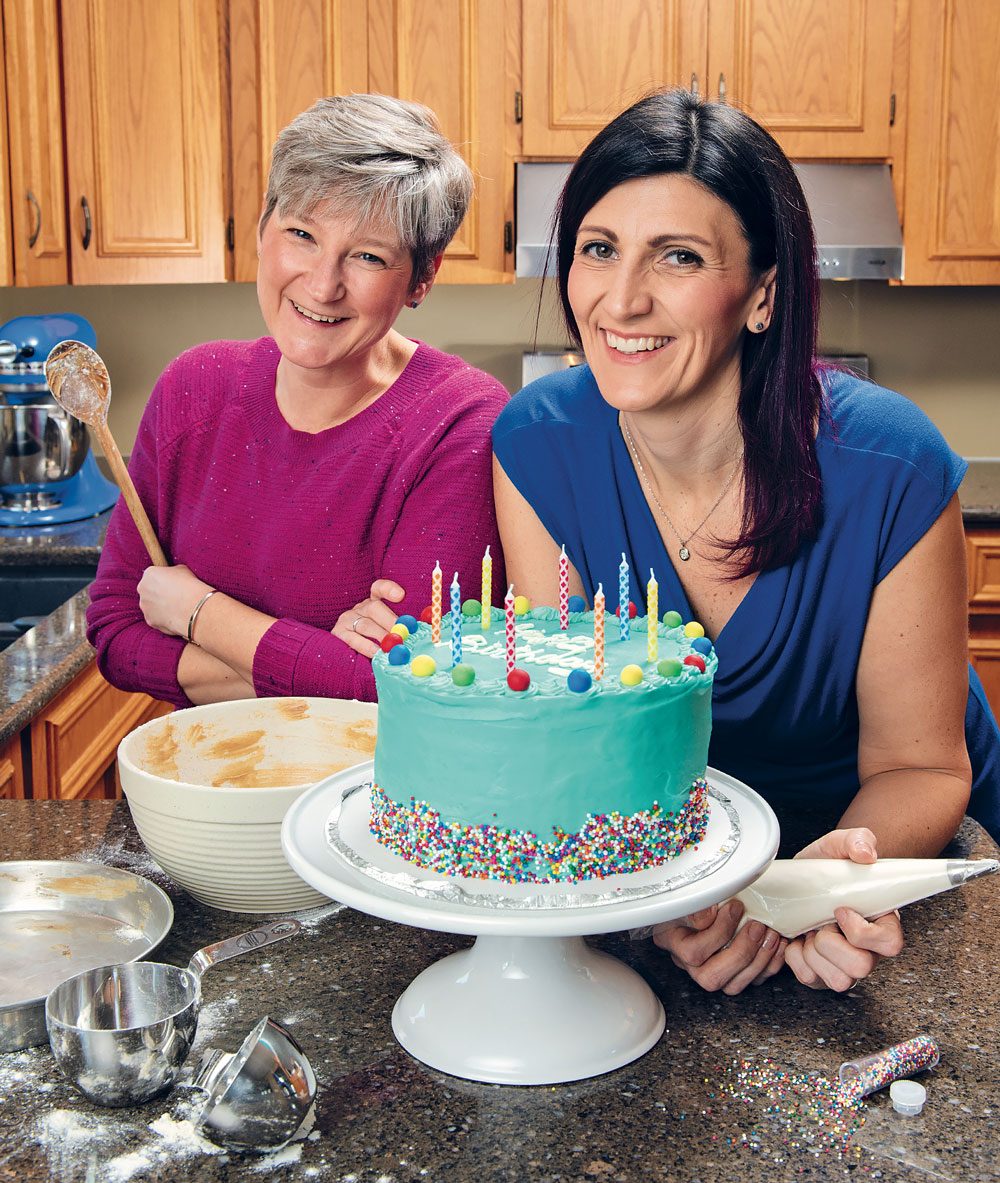
Happier birthdays
On February 12, 2019, Brendon Fontaine blew out five candles on a birthday cake covered in strawberry icing and topped with a plastic figurine of his favourite character from Paw Patrol. “He loved the cake,” says his mother, Faith, who lives in Winnipeg with Brendon and his little sister. “I hid it in the back of the fridge to keep him from peeking.”
Brendon’s surprise came courtesy of Cakes for Kids Winnipeg, a group of home bakers who recognize that a simple birthday cake can be an extravagance for families like the Fontaines, who live on social assistance.
The group was founded three years ago by Christy Rogowski, a 40-year-old who works in health care software, and her partner, Wendy Singleton, a 46-year-old health care administrator. “Imagining a child who wasn’t going to have a birthday cake was really upsetting,” Rogowski says.
A Facebook call-out for volunteers eventually added 150 bakers to their roster, which includes people of all skill levels—grandmothers who like to bake with their grandchildren as well as professional bakers. When volunteers first apply, they’re asked why they want to contribute. “Some people have said that they didn’t have a cake on their birthday growing up, and they know how important it is,” says Singleton. More commonly, though, they say they want families in need to know that their neighbours care about them.
The cake recipients are nominated by community organizations and Winnipeg Child and Family Services, which send Rogowski and Singleton information about each kid’s interests and favourite flavours. Designs have included elaborate fondant icing shaped into unicorns, superheroes or a lemonade stand. All cakes are provided anonymously, although the volunteer bakers love to hear about the look on a child’s face when they first see their cake.
A child might receive a cake because of the family’s lack of money—22 per cent of children in Winnipeg are living in poverty—or lack of a kitchen in which to bake. Sometimes a parent or child is sick, leaving the family too busy to make the treat themselves.
Cakes also go to children living in foster care. Jodi Korolyk, a family services worker with Winnipeg Child and Family Services, has so far ordered birthday cakes for five of the almost 800 kids in their system. “It shows the child they have a lot of people there to support them and celebrate them,” she says. “For most kids, it doesn’t really matter what the cake looks like; just getting one is exciting.”
Korolyk sometimes arranges for parents whose children are in foster care to bring the cake to their kids themselves. “It’s a really good tool to help promote a relationship between them,” she says, adding that it can also build the parents’ trust in her.
By the end of last year, Cakes for Kids had provided over 575 cakes to mark kids’ birthdays, and the baking continues. Rogowski and Singleton are even considering expanding the program nationally and also baking for isolated seniors. After all, there’s no age limit to the positive impact of a well-timed cake.
These random acts of kindness will make you proud to be Canadian!
Published Mar. 5, 2020
What is the difference between an epidemic and a pandemic?
Although the terms are sometimes used interchangeably, there is technically a difference between an epidemic and a pandemic. The CDC defines an epidemic as “an increase, often sudden, in the number of cases of a disease above what is normally expected in that population in that area.” The official definition of a pandemic is “an outbreak of disease that occurs over a wide geographic area and affects an exceptionally high proportion of the population,” according to Merriam-Webster. In other words, a serious and sudden outbreak of disease would start out as an epidemic, but some may then escalate to the level of becoming a pandemic once the disease or virus has spread across countries or continents.
The coronavirus explained
Before exploring what label would be used to describe the current health crisis, it’s helpful to review exactly what a coronavirus is. The World Health Organization (WHO) explains that “coronaviruses (CoV) are a large family of viruses that cause illness ranging from the common cold to more severe diseases.” A novel coronavirus (nCoV) is a new strain that has not been previously identified in humans. The virus currently in the news is officially called COVID-19.
The WHO recently said it’s too early to call this outbreak a pandemic, although it warned that nations (and the world as a whole) need to take precautions and be prepared for that possible outcome. Other sources have already started using the pandemic label. At the very least, though, there’s no dispute that this virus has developed well into epidemic territory.
The worst pandemics in history
There’s some dispute about what qualifies as the world’s “first” pandemic, partly because there is disagreement regarding which cases would be considered an epidemic versus a pandemic. What is viewed by some experts as the world’s first reported pandemic didn’t have an official name, though according to historians, it was likely typhoid fever. Building up steam as it passed through a wide swath of nations, it was at full force when it hit Athens around 430 B.C. and killed nearly two-thirds of the population.
In the 11th century, leprosy—which had been around for centuries—suddenly increased and likely reached pandemic status as it spread across Europe. But, in the 1300s, what some experts see as the first true pandemic arrived with a vengeance: The bubonic plague—nicknamed the “Black Death”—spread like wildfire through Asia and Europe. It wiped out more than a third of Europe’s population and continued to hit in waves over the next few centuries, killing millions of people.
The first major flu-related pandemic was the Russian Flu, which traveled around the world in the late 1800s. An outbreak of the Spanish Flu followed roughly 20 years later. (Discover these crazy old-time remedies that were used to treat the flu.) The most well-known pandemic in recent modern history was HIV/AIDS, which was first identified in the early 1980s.
How epidemics and pandemics are controlled
Despite the differences between an epidemic and a pandemic, the fact of the matter is that you can get very sick from either one—and the effects can be devastating to entire communities. Many countries have devised pandemic plans that help officials respond quickly when an outbreak occurs. Often, the focus is on mitigation—containing the outbreak through quarantine and immediate treatment—and deploying critical resources to affected populations. In the United States, the CDC has developed a national pandemic influenza plan that outlines the response plan for flu-related illnesses.
One element of the plan is “community mitigation,” or trying to keep the illness contained to a limited area. This means trying to keep people who are already sick from spreading it to others. Recommended strategies include frequent and thorough handwashing, sanitizing surfaces and electronic gadgets that are used often, diligent cleaning procedures, and staying home when sick.
It seems like there’s a new coronavirus case every day. If the alerts and headlines make you want to stay home and forgo that spring or summer trip you already booked, read on to learn how to cancel your travel and get most (or some) of your money back.
Check with your airline
As of this writing, airlines including JetBlue, are allowing you to rebook or cancel your airfare without penalty, no matter where your destination through select dates. Others, including United Airline, are waiving cancellation or rebooking fees for select destinations in Asia. Check with your airline to find out its current policy—and keep checking. Currently, info regarding waived fees is changing every day—and in some cases, by the hour, says Michelle Osborn, owner of Outta Here Travels in Pampa, Texas. Most hotels allow you to cancel your reservation without a fee up until 24 hours before your scheduled check-in.
Contact your credit card
If your credit card has travel protection, you may be able to get some money back, says Shondra Cheris, owner of Black Will Travel, based in the Washington D.C. area. “Most companies have some sort of travel protection, so if you bought your plane ticket with a credit card, reach out to customer service for help,” she says.
Try a different destination
If you used a travel agency, they may be willing to send you to a different destination, says Jessica van Dop DeJesus, a Washington D.C.-based travel and food writer with The Dining Traveler. “Back in 2003, I booked a trip with a travel agency to Hong Kong, then SARS broke out,” she says. “The travel agency was able to apply my deposit for a trip to Thailand instead.”
Resell your trip
If you can’t cancel or modify your trip because the rules of the booking provider won’t allow it, you may be able to transfer your trip to a different person, says Galena Stavreva, CEO of SpareFare.net. “Sellers might not be able to recover 100 per cent of what they paid for their holiday, but even getting half back is so much better than losing everything,” Stavreva says. With flights, your airline needs to allow name changes—and the ones that do always charge a change fee for the service, while hotels typically allow changes to the name of the guest without fees. The rules for package holidays depend on your travel agency, but most allow name changes and charge a small administrative fee for the service, Stavreva says. (Coronavirus isn’t the only thing you need to be wary of on vacation—find out about these real-life travel disasters.)
Travel insurance helps
If you’re thinking about planning a vacation, but are on the fence, invest in travel insurance, as things like quarantine are generally being considered as qualifying trip interruption, says Kristin Benton, owner of Adventure Alchemy, a travel planning company based in Nolensville, Tennessee. “Each company has its own policies regarding coronavirus, and you’ll want to know specifics about coverage before buying,” says Benton. Read the fine print carefully, before signing on the dotted line.
Check with your cruise
Cruise lines have been proactive in cancelling cruises in regions affected by coronavirus, says Tanner Callais, founder of Cruzely.com. Some cruise lines have totally changed their itineraries through April to exclude ports in or near the affected areas, or they are issuing refunds or credit toward a different sailing date, Osborn says. Some lines, including Norwegian Cruise Lines, have moved their final payment due date to 90 days from 120 days before sailing to give guests more time to see how this plays out, and if they want to cancel or continue with booking their cruise. Some are allowing name changes on reservations within the specified dates up to 45 days before travel, Osborn says.

Lesson from a five-year-old
It’s eight o’clock on a cold spring night. Our apartment has been hit by a cyclone—the handiwork of an energetic five-year-old. Every bit of furniture is draped with paper chains, scissors and Scotch tape, modelling clay, piles of acorns and party favours.
I’m so tired tonight. I’ve been on crutches for seven weeks, recovering from hip surgery, and I’m trying fruitlessly to clean up.
The phone rings—for the sixth time in less than an hour. I know who it is. When my mother was 68, a hemorrhagic stroke claimed her brain but not her life. She awoke from a coma severely damaged; the bleeding instantly razed the landscape of her mind. Dementia soon built a Gothic fun house of distortions where coherent architecture had once stood.
She has been manacled inside that mind now for a decade, experiencing psychic distress.
My mother is dogged by paranoia: she thinks she has been kicked out of her assisted-living facility (not true); she thinks her daughters have not visited in months (it has been a few days); she thinks that her friend Jimmy never wants to see her again (he calls and visits weekly).
Each time she calls, I play a game with myself called “How Good of a Person Can I Be?” I’ve won five rounds of the game tonight; I am due for a fall.
She has no idea that she has repeated the things she is about to say a million times today and a million times yesterday. She has no idea that I had surgery, nor can she recall her own granddaughter’s name. She is unaware of most of the past, and she drifts in the present. Also, she is lonely.
I hurl my anger at the easiest target: my mother, the very victim of this chance horror.
“Mom!” I yell. “You are not being removed from your home! And we visited two days ago!” (Maybe it was four days, but she won’t remember anyway.) “Mom, you have to believe me, and even if you don’t, I cannot talk anymore! Everything is fine!”
Silence. Then: “I was only calling to say hi.”
I feel the dagger of passive aggression, which is the only working weapon in her mental arsenal. My mother continues, having already forgotten that I yelled. (Sometimes she does remember; tonight I luck out.)
“But I’m also frantic about something,” she continues. “Do you have a minute?”
“No, Mom, I don’t. I can’t again with this!”
“Why are you yelling?”
I’m yelling because you aren’t my mother; you are a poorly rendered stand-in who cannot help me care for my child, or be a grandmother, or even remember to ask me about my day. I’m yelling because I have talked you off this ledge five times tonight, and I’m yelling because you remind me of everything I fear: aging, sickness, fragility, bad luck, loss, impermanence. You name it—if it’s scary, you remind me of it!
I flop on the couch, aware of all that my daughter is witnessing. She hears me reprimand my mother, lose my patience, announce that someone I love is an imposition. I have not only failed tonight at being a Good Person; I have failed at being a Good Example to My Daughter.
I stew on the couch, defeated.
“Can I talk to Grandma Ellie?” My daughter reaches for the phone.
Wordlessly, I hand it over.
“Hi, Grandma!”
I hear my mother exclaim through the receiver: “Sweetheart! How are you? Did you go to school today?”
What witchcraft is this? All my daughter said was “Hi, Grandma,” and my mother sounds like a person fully alert to the heartbeat of a normal day.
“Yes, Grandma, and today was share day, and I brought my Wonder Woman bracelets.”
“Can you put it on speaker?” I whisper to my daughter.
She obliges, and out of the phone comes a waterfall of good cheer. My mother tells her how much she loves her and how lovely her voice sounds.
Then: “I hope I’ll see you soon?” My mother makes her plea for a promise of companionship. I hear her voice differently now. I am not tired or angry; I am soft inside, watching my kindergartner handle her fragile grandmother with such deftness.
“Grandma, we are taking you to the carousel this weekend. I’m going on the frog, and you can go on the horse next to me.”
“Oh, that’s wonderful, darling!” I’m mesmerized by their exchange. “Tell me, did you go to school today?” She already asked that.
“Yes, Grandma, I went to school, and we had share day. I brought my Wonder Woman bracelets.”
“You did? How wonderful!”
“Do you want me to sing you a song? I know three songs from Annie.”
And then my daughter sings.
The sharp evening breeze sails through the window, and the mess in our apartment settles around me like an old soft quilt. I listen to my daughter crooning to her grandmother, caring for her with exquisite patience.
I spend so much time wishing she had a “real” grandmother, wishing she knew my “real” mother. In this moment, I see that she does have a real grandmother, and she does have a real relationship with her. It isn’t the one I had hoped for, but to her, this is normal—to care for a loved one is a part of life.
When they hang up, after many kissing noises, I tell my daughter it is bath time. She wildly protests, but I draw the bath anyway. I am still Mommy, after all, and she is still five.
But tonight, she taught me how to answer the phone like a grown-up.
Next, read a letter from a daughter to the medical students who are studying her parents’ bodies.
The New York Times (November 3, 2017). Copyright © 2017 by New York Times Co., nytimes.com.
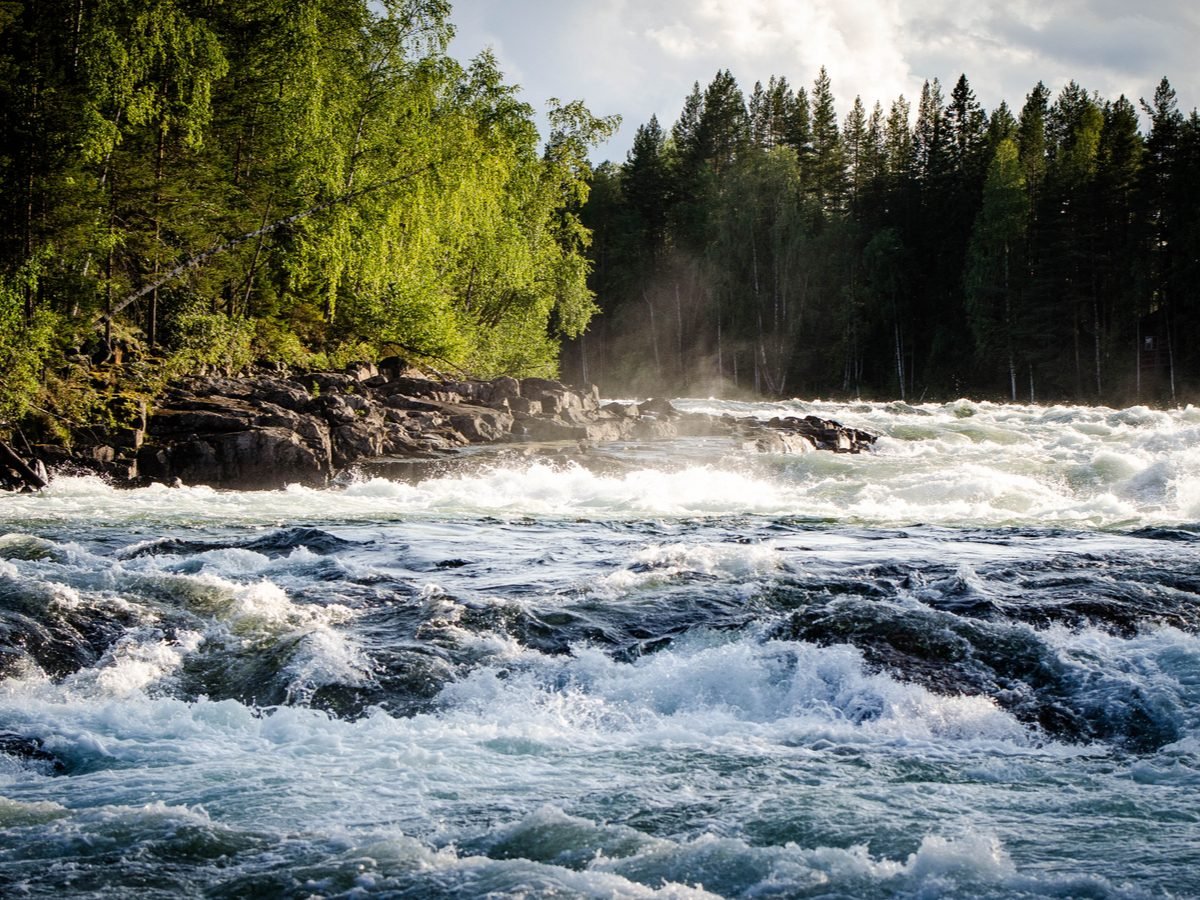
Curtis Whitson knew the waterfall was coming. He’d rafted down the Arroyo Seco, a river in central California, before. He figured he would hop out of his raft into the shallow water, rappel down the rocks on either side of the falls, and continue on his way, as he had on a previous trip.
But this year was different. Heavy snow and spring rains had turned the usually manageable falls into something fierce. And this year, instead of his buddy, Whitson’s companions were his girlfriend, Krystal Ramirez, and his 13-year-old son, Hunter. As the three of them approached the falls late in the afternoon of the third day of their camping trip, Whitson could tell from the increasing roar of water in the narrowing canyon that they were in serious trouble. There was no way they’d be able to rappel down the rocks as planned.
“The water was just gushing through there with tremendous force,” recalls Whitson, 45.
They could wade to the shore, but would anyone find them there? They had no cell service, and they hadn’t seen a single person in the past three days. And Whitson knew that they’d be sharing the ground there with rattlesnakes and mountain lions.
As he pondered what to do, Whitson hit on a bit of luck—he heard voices coming from the other side of the falls. He yelled, but the sound of the rushing water drowned him out.
We have to get these people a message, Whitson thought.
He grabbed a stick and pulled out his pocketknife to carve “Help” in it. Then he tied a rope to it so the people would know it wasn’t just any stick. He tried tossing it over the falls, but it floated away in the wrong direction.
“We’ve got to do something!” Whitson yelled to his son. “Have we got anything else?”
Then he spotted his green Nalgene water bottle. Whitson grabbed it and carved “Help!” on it. Ramirez also reminded him that he had a pen and paper, which she’d brought to play games with, in his backpack.
Whitson knew it was a long shot. But he scrawled “6-15-19 We are stuck here @ the waterfall. Get help please” and shoved the note into the bottle.
This time, his throw over the waterfall was perfect.
“All right, that’s all we can do,” Whitson told Hunter.
It took 30 minutes to navigate back upstream to the beach where they’d had lunch. They made a fire and laid out a tarp. With no reasonable expectation that their message in a bottle would find its way to anyone, they threw another Hail Mary pass: They spelled out SOS in white rocks, which they set on the blue tarp. As the evening wore on, they placed a headlamp with a flashing light on a ledge so that the SOS could be seen from overhead.
By about 10:30 p.m., they decided they probably weren’t going to get rescued that night, so they pulled out their sleeping bags. Before turning in, Ramirez stoked the fire to keep the mountain lions away.
Then, just after midnight, they heard a helicopter hovering above them. Whitson turned to his son and started shaking him.
“They’re here!” he said.
Whitson ran over to the headlamp and started flashing it at the helicopter. He, Ramirez, and Hunter were waving and hollering when they heard the magic words: “This is Search and Rescue. You have been found.”
The helicopter circled as the pilot looked for a good place to land. Finding none, the crew announced to the campers over the PA system that they would not be rescued until morning and told them to conserve their firewood.
The next morning, the helicopter returned and lowered a crew member on a cable. Then rescuers lifted Hunter, Ramirez, and Whitson out of the gorge one by one and deposited them and their gear on the closest bluff where the helicopter could safely land.
It was a moment of pure happiness as the three chatted with the officers who had rescued them. Together, they marveled at the unlikelihood of it all.
“They said that in the 25 years that they’ve been performing these kinds of rescues, no one’s ever been rescued by a message in a bottle,” Whitson says.
When the officers dropped them back at the Arroyo Seco Campground, the trio learned more about the long shot events that had saved them: Two men had seen the water bottle bobbing in the water. When they picked it up, they noticed the writing on it—“Help!”—which piqued their curiosity. Then they realized there was a note inside. After they read it, they hightailed it to the campground, turned the bottle in, and took off without leaving their names.
“It wasn’t about notoriety; it wasn’t about leaving their names,” Whitson says. “It was just a matter of: Here’s the water bottle, here’s the note, here’s the information we know.”
A few days after news of the rescue broke, one of the hikers contacted Whitson. That’s when he learned the rest of the story. There were actually two little girls hiking with the men that day. It was the girls who first spotted the bottle and swam to get it. Whitson is planning on having a big barbecue to meet the hikers—and thank them.
“I imagine it’s going to be one of the greatest moments of my life,” he says.
Next, learn how a Facebook thread saved two friends injured in the Bali jungle.
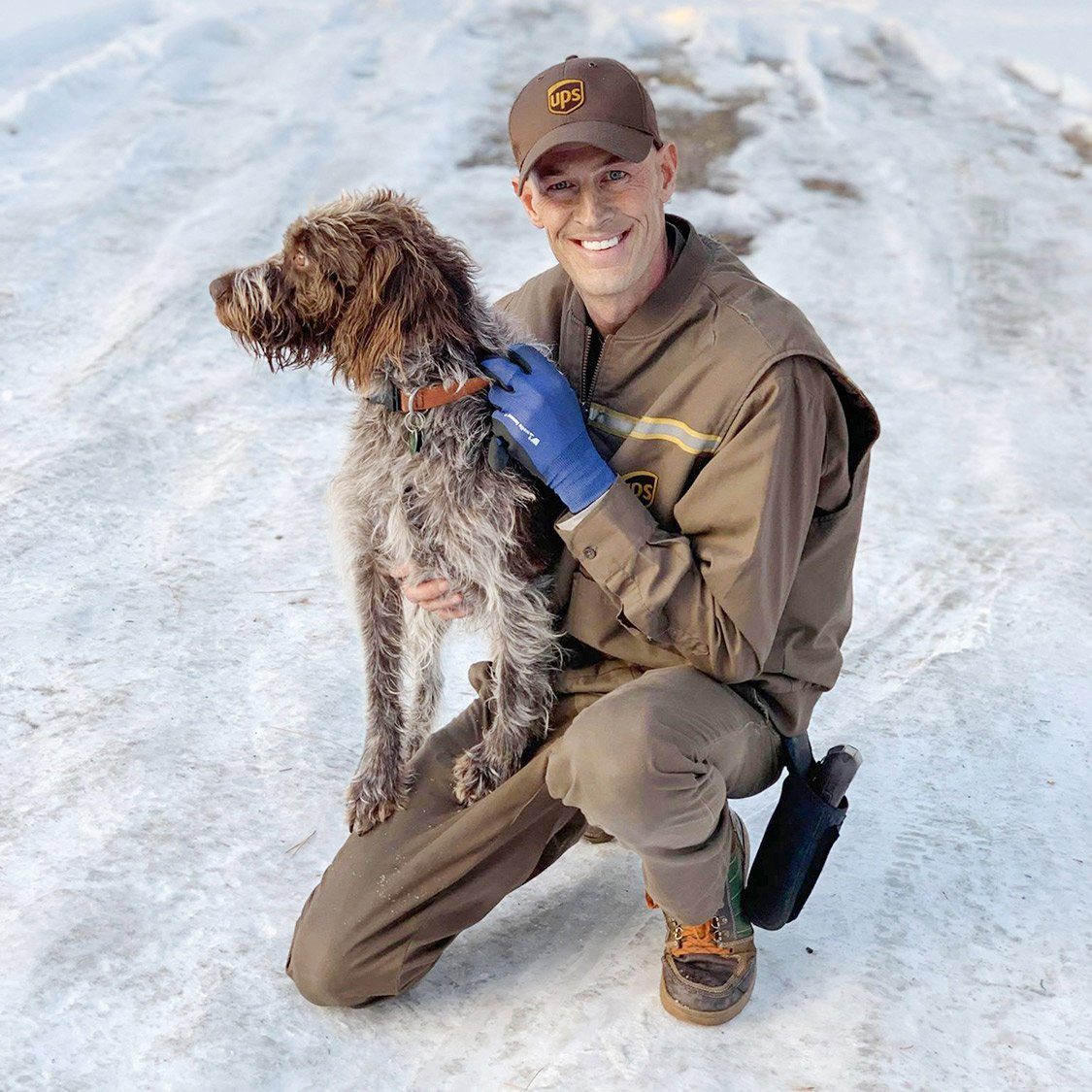
“Animals are my weakness.”
UPS driver Ryan Arens was making his rounds near a pond in Bozeman, Montana, when he heard an unearthly sound. “Like a cry for help,” he told the Dodo. It was December 2018, and about 15 feet from the frozen banks was the source of that cry—a half-submerged brown-and-white wirehaired hound, struggling to cling to a thin layer of ice. How she got there no one knows, but an elderly man was already on the scene, determined to save her. He’d entered the pond in a rowboat and was hacking away at the ice with a rock to create a path to the dog. It was slow going, and Arens, 44, thought he stood a better chance.
“Animals are my weakness,” he told the Great Falls Tribune, explaining why he stripped down to his boxers and socks, even though the temperature was freezing cold, and commandeered the rowboat.
His heart thumping, Arens slid closer to the dog and used the other man’s rock to smash away at the ice. He gave one strong heave too many and slipped off the boat, crashing into 16 feet of frigid water.
He resurfaced in time to see the dog going under. Using nervous energy to keep warm, he swam about five feet toward her, grabbed hold of her collar, and pulled her to the ice. He then boosted the dog into the boat and slid it back to the shore, where anxious bystanders carried the dog to the home of the rowboat owner, a retired veterinarian. Once in the house himself, Arens jumped into a warm shower with the dog until they both defrosted. A few more minutes in the pond, the vet told Arens, and she would have likely suffered cardiac arrest.
The next day, Arens was back working the same neighbourhood when the dog’s owner came over to thank him for saving Sadie. “Would you like to meet her?” he asked.
He opened the door to his pick-up, and Sadie bolted out. She made a beeline for Arens, leaping on him and bathing him in wet kisses. That special delivery, says Arens, “was the highlight of my UPS career.”
Next, read the story of the hiker who saved the life of an Alaskan timber wolf.

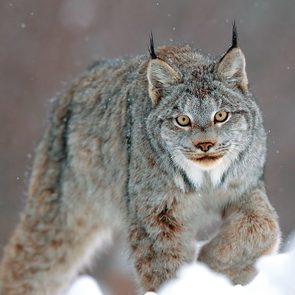 I Forged a Bond With This Canada Lynx" width="295" height="295" />
I Forged a Bond With This Canada Lynx" width="295" height="295" />